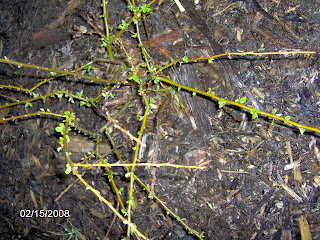Growing bamboo for me is fun, I appreciate the beauty of the plant and selling it gives me the opportunity to interact with a variety of people, those that appreciate plants and gardening more than most. My business is unlike any other, I grow bamboo, part-time and sell by appointment and at local plant sales. No store front, low overhead and on my own terms.
My business is small and low key,
makes enough money to support my bamboo collecting habit, but not so intensive that it infringes on my personal life.
Many of the people that visit ask how I got into plants and bamboo. I attribute it to my mother-in-law who really introduced me to gardening, morphed into tinkering and growing Japanese Maples. Japanese Maples are beautiful, but for a lazy gardener like myself,
they required
alot of attention and time and not much profit when all was said and done.
Bamboo is easy to grow and I appreciate the challenge of overcoming the
mis-information on bamboo (that all bamboo is invasive). The perfect plant for the laziest of
gardeners. The colors, shapes and leaves offer a big payoff for relatively little effort.
I also have found strength in my business is
through carrying bamboo
varieties that cannot be found in this area and operating within a niche that can coexist among the big boys like Home Depot,
Lowes.
I also figure that my low key business model is a nice slow intro to the nursery industry. Once I can financially pull it off to buy some land, maybe I'll open a storefront nursery in the country.
Finally, through my website -
www.madmanbamboo.com I'm amazed by the extent by which people are
interested in bamboo, getting web hits form all over Europe, east Asia, South Africa and all over the U.S.
So, what up with the name - Mad Man Bamboo? The name came from my wife who says I'm "mad" about bamboo. That's in crazy through obsession. But its a good obsession that keep
s me happy, so its all good in my book.
Cheers!
Sean
Mad Man Bamboowww.madmanbamboo.com
 My wife came up with a great idea a couple of weeks ago.... buy tickets to the Placer County Farm and Barn Tour. Best $20 we spent, in six hours my family got to:
My wife came up with a great idea a couple of weeks ago.... buy tickets to the Placer County Farm and Barn Tour. Best $20 we spent, in six hours my family got to:














































